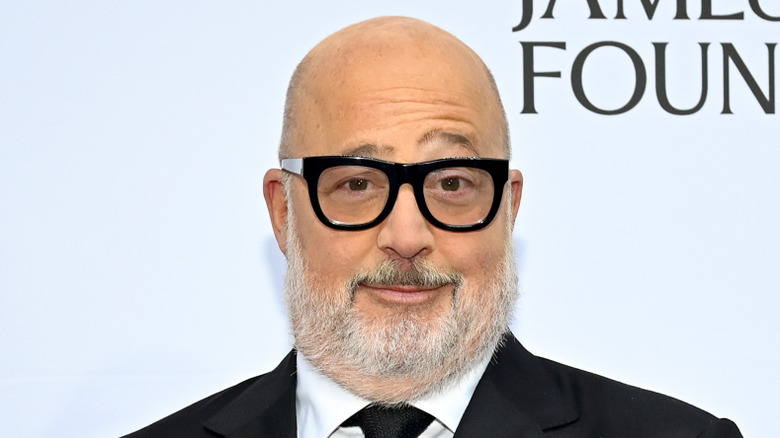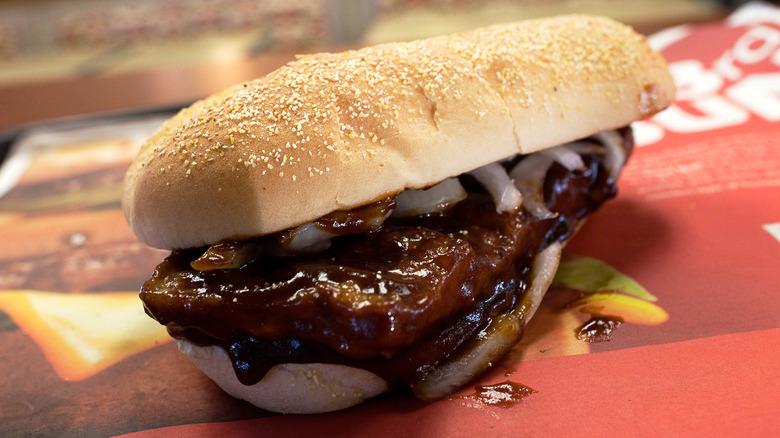
Daniel Boczarski/Getty Images
As illustrated by our ranking of the best "Bizarre Foods" episodes, host Andrew Zimmern has happily eaten pork intestines, fermented shark, rat hearts, and numerous other items capable of giving pause to many Americans. Accordingly, one would think that Zimmern possesses an iron-clad constitution to match his genuine curiosity about cultures and their cuisines. While that may be mostly true, a more commonplace food that is incredibly popular among McDonald's fans was a step too far for the TV show host. According to The Takeout, Zimmern's dalliance with the McRib was over before it really began.
In a now deleted Instagram post, Zimmern remarked that he didn't want to "yuck anyone's yum" but nonetheless felt that the McRib "has a really bad, cheap, commodity pork aftertaste. It's not how pork should be." He then refused to eat another bite of the offending food, ultimately deeming it "super, super unpleasant." While he couldn't stand the sandwich, it has arguably stood the test of time.
The McRib burst onto the fast-food scene way back in 1981 and was created by former gourmet contest winner Rene Arend, McDonald's first executive chef. The product was a joint effort, however, as the process for making restructured meat (which made the sandwich possible) is credited to University of Nebraska-Lincoln professor Roger Mandigo.
What's the McRib made of (and why isn't it a permanent item)?

David Paul Morris/Getty Images
Andrew Zimmern briefly touched upon the technology behind the McRib in his critique, saying, "It is made through a process called meat restructuring, where it's essentially ground pork shoulder that's shaped like a little section of riblets." According to a research paper published by the University of Nebraska-Lincoln, restructured meat consists of "lower-valued meat trimmings" that are broken down and combined with water and salt, which causes proteins to bind the whole mixture together. The resulting mound of food can be stamped into just about any shape, including McDonald's iconic riblet configuration.
The questionable quality of meat trimmings notwithstanding, the McRib seems to be beloved enough that it could stay on the menu permanently. McDonald's website suggests that the sandwich is a seasonal offering. However, there's an alternate theory that proposes the fluctuating cost of pork parts is the true reason it disappears and reemerges. As the already limited supply of pork trimmings in the U.S. dwindles, prices spike, which makes the McRib more expensive to produce. It's theorized that the fast-food chain eliminates the item from menus during these periods, only to re-introduce it later when costs go back down. This cycle also makes the McRib more attractive to customers, who'll want to order it before it disappears again.



